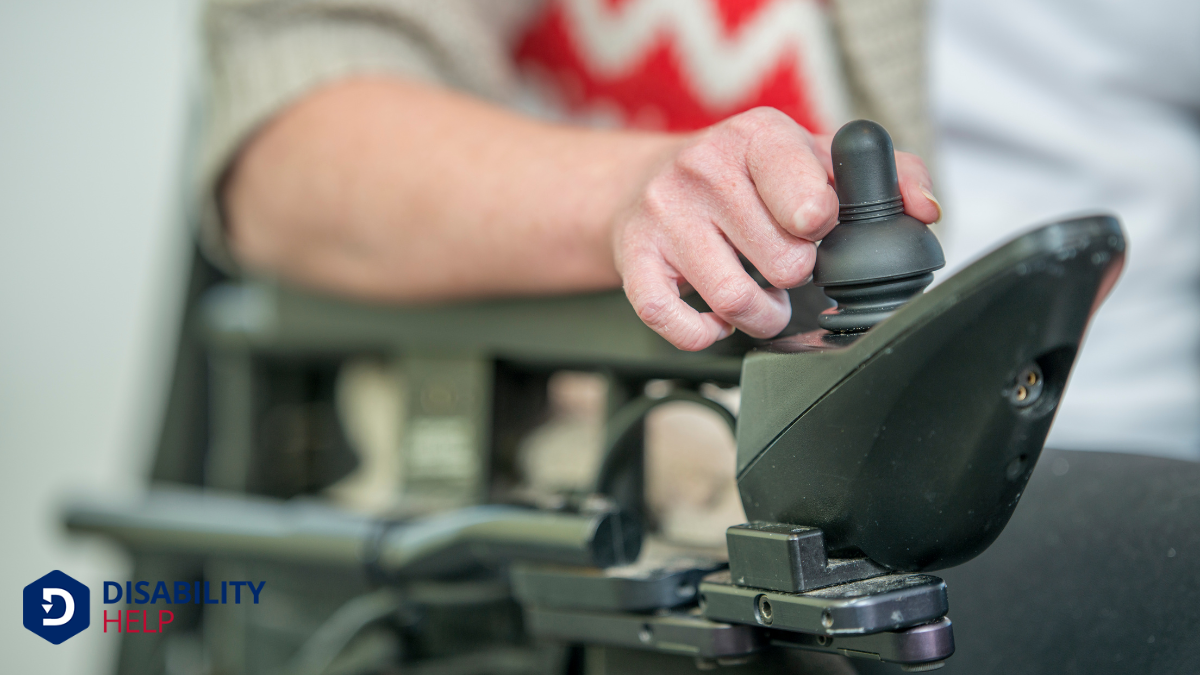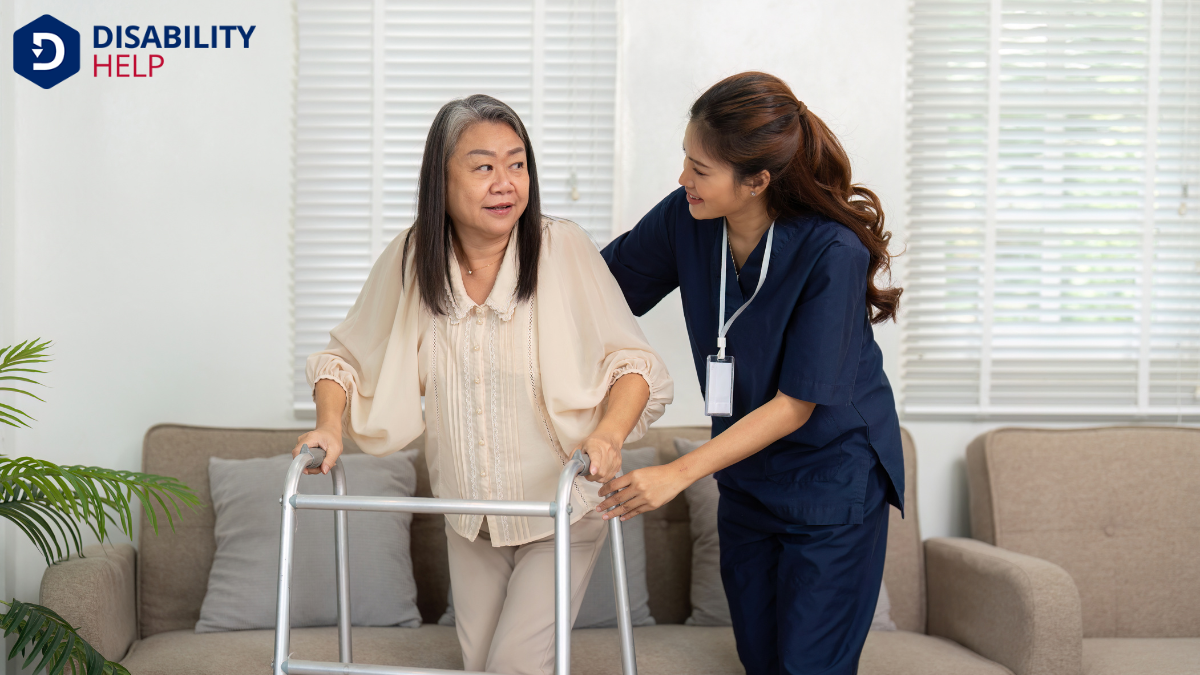When we're assisting a patient with mobility, it's vital to approach the task with empathyThe ability to understand and share the feelings of another, particularly important in understanding... and precision. We'll start by evaluating their individual needs, involving them in the decision-making process to guarantee they feel empowered. Choosing the right mobility aidsDevices designed to help individuals move around more easily, such as canes, walkers, or wheelchairs... and creating a safe environment are essential steps. We must encourage their independence, allowing them to move at their own pace. Let's explore how these strategies come together to support their journey.
Key Takeaways
- Assess individual needs and preferences to choose suitable mobility aids.
- Remove environmental hazards and ensure clear pathways for safe movement.
- Communicate clearly and use assistive devices like gait belts for support.
- Encourage patient independence by promoting self-reliance and autonomy.
- Approach assistance with compassion and respect for patient dignity.
Understanding Mobility Challenges
When assisting patients with mobility issues, it’s important to first understand the challenges they face. We need to empathize with their difficulties in moving around safely and independently.
These challenges might include muscle weakness, balance problems, or pain that restricts their movements. By recognizing these obstacles, we can better support them.
Let's not forget that emotional aspects are just as significant. Patients may feel frustrated or anxious about their limitations. We should acknowledge these feelings and offer encouragement.
Open communication is imperative, allowing us to identify specific needs and preferences.
We must also consider environmental factors. Uneven surfaces, narrow spaces, or lack of support can complicate mobility.
Understanding these challenges helps us create a safer and more accessible environment for our patients.
Choosing the Right Mobility Aids

In choosing the right mobility aids, we must first assess the patient's individual needs to guarantee their comfort and safety.
It's also important to take into account environmental factors like home layout and daily routines.
Assess Individual Needs
Choosing the right mobility aid starts with understanding the unique needs of each patient. We begin by evaluating their physical condition, considering factors like strength, balance, and endurance.
It's essential to identify any specific limitations they might face, such as joint pain or muscle weakness, which could influence our choice.
Next, we discuss the patient's lifestyle and daily activities. Are they active or mostly sedentary? Do they need support for short distances or more extensive mobility?
These insights help us tailor our recommendations, ensuring the aid is both practical and comfortable.
Finally, we involve the patient in the decision-making process, listening to their concerns and preferences.
Consider Environment Factors
Before selecting a mobility aid, we must carefully consider the environment where it will be used. Is the patient primarily indoors or outdoors?
If indoors, we should assess the space's layout, such as narrow hallways or carpeted floors. For outdoor use, we need to think about uneven terrains, weather conditions, and public accessibilityThe design of products, devices, services, or environments to be usable by people with disabilities.....
Lighting is essential too. Dimly lit spaces might require aids with built-in lights or reflectors for safety.
We must also evaluate the terrain's stability and any obstacles, like stairs or curbs, that might pose challenges.
Additionally, let's consider the transportation method. Will the aid fit in a vehicle or need to be carried frequently?
Evaluate Aid Options
Selecting the appropriate mobility aid is essential to enhancing a patient's independence and quality of life. Let's explore the best options together.
First, we need to assess the patient’s specific needs—consider their strength, balance, and the environments they navigate daily. Will they benefit from a caneA mobility aid used to assist with balance and walking., walkerA mobility aid with a metal frame and sometimes wheels, used by individuals who need additional supp..., or wheelchair? Each aid has unique features and purposes.
Next, we should engage with healthcare professionals for a tailored recommendation. They can guide us in understanding which device aligns with the patient’s medical condition and lifestyle.
Once we've narrowed the choices, we must guarantee the aid is the correct size and offers comfort. Testing the aids can help us make an informed decision, ensuring the patient’s safety and ease of use.
Creating a Safe and Supportive Environment
Let's focus on making the environment safe and supportive for our patients.
We should promptly remove any hazards that could cause trips or falls and install supportive equipment like grab barsBars installed in bathrooms or other areas to provide support and prevent falls for those with mobil... and handrails where needed.
Ensuring adequate lighting is essential so patients can move around confidently and safely.
Remove Hazards Promptly
Guaranteeing a patient's environment is free from hazards is essential for promoting their safety and mobility. We should regularly assess the area around them, looking for potential risks like loose rugs, clutter, and wet floors. By promptly removing these obstacles, we help prevent falls and accidents that could hinder their progress.
It's vital to keep pathways clear and make certain that furniture is arranged to allow easy movement.
Let's also pay attention to lighting, as poor visibility can lead to missteps. We should replace any burnt-out bulbs and consider adding nightlights in dim areas.
Install Supportive Equipment
After ensuring the environment is free from hazards, we can focus on enhancing it with supportive equipment to promote mobility.
Grab bars are essential in areas like bathrooms, providing stability when patients need to move. Installing handrails along hallways or stairs can also make a significant difference, ensuring safe passage.
For those who need assistance getting in and out of chairs or beds, consider using transfer aids like slide boards or transfer belts. Bed rails can offer added security and support while patients adjust positions or get in and out of bed.
Additionally, placing non-slip mats in commonly used areas will further reduce the risk of falls. By installing this equipment, we create a supportive environment that encourages safe and independent movement.
Ensure Adequate Lighting
While creating a safe and supportive environment, it's crucial to guarantee adequate lighting throughout the patient's living spaces.
We should focus on ensuring all areas, particularly hallways, staircases, and bathrooms, are well-lit to prevent accidents. Bright, even lighting helps patients see obstacles and navigate their surroundings with confidence.
Let's replace dim bulbs with brighter, energy-efficient options like LED lights, which provide consistent illumination and reduce shadows.
Adding nightlights in key areas can guide patients during nighttime trips, minimizing fall risks.
We can also install motion sensor lights for convenience and safety, ensuring lights turn on as soon as movement is detected.
Techniques for Assisting With Movement
Helping someone with mobility can be a rewarding experience, and there are several effective techniques we can use to assist with movement safely.
First, let's make sure we're communicating clearly with the person we're helping. We should explain the steps involved and encourage them to express any concerns.
When assisting, we can use a gait belt to provide extra support. It's important to stand close, maintaining a stable base, and to use our legs—not our back—when lifting or supporting.
We can guide them by holding their arm or shoulder, offering steady support. Moving at their pace helps prevent accidents.
Encouraging Independence and Autonomy

Although providing support is essential, we should also focus on encouraging independence and autonomy in those we assist. Empowering patients to do as much as they can for themselves boosts their confidence and aids recovery.
We can start by evaluating their capabilities, allowing them to take the lead whenever possible. Encouraging them to make decisions about their movements, even small ones, reinforces their sense of control.
We should offer guidance rather than taking over tasks completely. For instance, instead of moving their limbs for them, we can guide their hands and offer verbal cues. Celebrating small achievements helps keep their motivation high.
Let’s remember that fostering autonomy isn’t just about physical movement; it’s about promoting a mindset of self-reliance and resilienceThe ability of individuals with disabilities to cope with and adapt to challenges and adversity..
Prioritizing Dignity and Emotional Support
Ensuring a patient's dignity and offering emotional support are essential components of effective care. When we assist with mobility, we must prioritize respect and empathy. Let's always address patients by their preferred names and involve them in decisions about their care. This simple act reinforces their autonomy and self-worth.
We should also be attentive to their emotional needs. Mobility challenges can lead to feelings of frustration or helplessness. By listening actively and acknowledging their feelings, we create a safe space for them to express concerns. Encouragement can go a long way in boosting their confidence and motivation.
Moreover, maintaining privacy during mobility tasks preserves dignity. Let’s remember, our approach should always be compassionate, ensuring patients feel valued and respected throughout the process.
Conclusion
In assisting patients with mobility, we must remember that our role is to empower rather than take over. By understanding their unique challenges and preferences, we can select the right aids and create a safe, supportive environment. Let’s encourage independence by guiding rather than controlling, focusing on their pace and comfort. Prioritizing dignity and emotional support helps build confidence and self-reliance. Together, we can foster a compassionate approach that respects their autonomy and enhances their quality of life.






